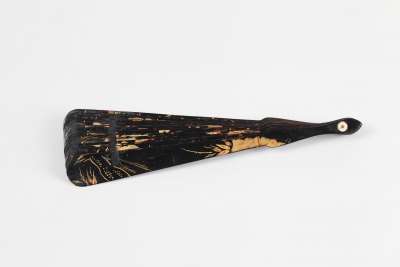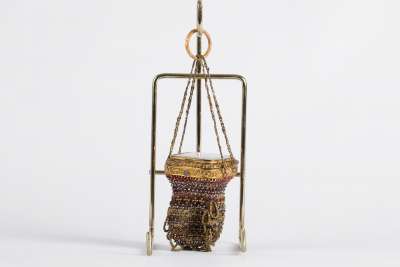A set of six Georgian gilt metal small buttons used for shirts plus one larger button. Circa 1762 - 1811
This collection features seven Georgian buttons, composed of six smaller ones and one larger button. Each is crafted from metal material with intricate gilt filigree designs. The six smaller buttons have a square shape with rounded corners and are adorned with a filigree pattern, which includes swirls, floral motifs, and openwork that reveals the background beneath. The larger, central hexagonal button also exhibits the filigree design style with elaborate scrolls and floral patterns. It features a symmetrical layout with a rosette-like central motif, surrounded by radiating geometric and floral designs. The edges of this button are marked with a series of rectangular impressions, providing a more defined structure.
The meticulous attention to detail in their design suggests they were decorative elements on high-quality garments, reflecting the fashion and craftsmanship of the Georgian era (1714–1830). The prevalence of openwork and metal gilt in buttons during this time was often an indicator of wealth and a refined fashion sense.
Condition Report: Good with minimal wear, consistent with age and use. Some gilding loss.
Dimensions: Weight 0.005gm, Length Large 3cm Small 1cm, Width Large 2.5cm Small 1cm













